
The poplar grey is a moth of the family Noctuidae. It is found throughout Europe.
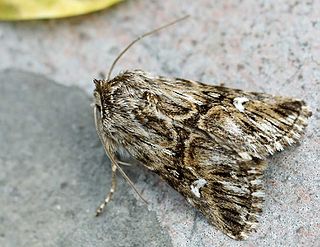
Calophasia lunula is a Palearctic species of noctuid moth known by the common names toadflax moth and toadflax brocade moth.

Apamea ophiogramma, the double lobed, is a moth of the family Noctuidae. It is found in the Palearctic realm in North and Central Europe to the Urals, Turkestan, Russian Far East, and Siberia. There have been at least two separate introductions into North America and it is now rapidly expanding in range. This species is sometimes placed in the monotypic genus Lateroligia.

The Sprawler(Asteroscopus sphinx) is a moth of the family Noctuoidea. It is found throughout western Europe, but is mainly a Northern species occurring South to Northern Spain the southern edge of the Alps, Central Italy and Northern Greece. North to southern Sweden. East to Kaliningrad and Moscow. Also in Central Europe, Turkey, the Caucasus and Asia Minor.

Hypena rostralis, the buttoned snout, is a moth of the family Erebidae. It is found in Europe far into Scandinavia.Then through the Palearctic into Asia Minor, the Caucasus and east to Siberia. It is widespread at forest edges, forest clearings, shore areas, in gardens, park landscapes and cultivated land and rises in the mountains up to 1600 m.

Hypena proboscidalis, the snout, is a moth of the family Erebidae. The species was first described by Carl Linnaeus in his 1758 10th edition of Systema Naturae.
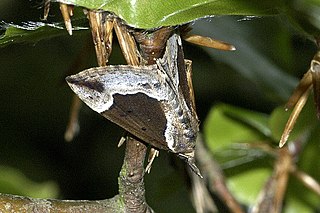
Hypena crassalis, the beautiful snout, is a moth of the family Erebidae. The species was first described by Johan Christian Fabricius in 1787. It is found in Europe.

Dysgonia algira, the passenger, is a moth of the family Noctuidae. The species was first described by Carl Linnaeus in 1767 and is found in the Palearctic - from the southern half of Europe and parts of North Africa through West, Central and South Asia.

The Early Grey(Xylocampa areola) is a species of moth of the family Noctuidae. It is found in Europe and Morocco.

Catocala electa, the rosy underwing, is a moth of the family Erebidae. The species was first described by Karl Friedrich Vieweg in 1790. It can be found in Europe and Asia.

Epilecta linogrisea is a moth of the family Noctuidae. It is found in Central and Southern Europe, Algeria, Morocco, the Caucasus, Armenia, Turkey, North-Western Iran, Syria, Israel and Lebanon.
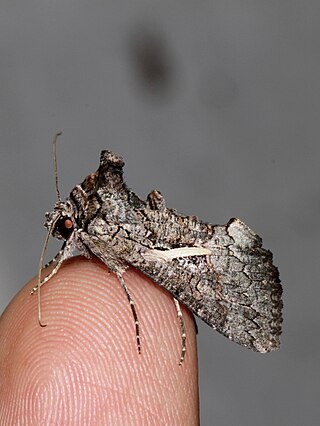
Ctenoplusia accentifera is a moth of the family Noctuidae. It is found in South-Western Europe, Greece, Africa, the Near East and Asia Minor.

Schrankia taenialis, the white-line snout, is a species of moth of the family Erebidae. It is found from Central Europe to Sardinia, Sicily, North Turkey and Azerbaijan.
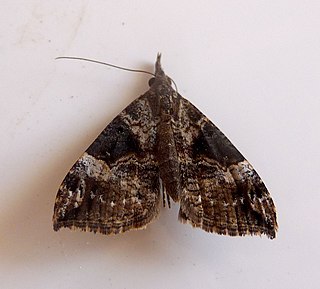
Hypena obsitalis, the Bloxworth snout, is a moth of the family Erebidae. It is found in the Mediterranean Basin including North Africa and in the Near East and Middle East, south up to the Sahara. Further north it is a migrant which occasionally establishes.

Standfussiana lucernea, the northern rustic, is a moth of the family Noctuidae. It is found from the Iberian Peninsula, Italy and Greece in southern Europe, north through most of the continent up to Fennoscandia west to Ireland and Iceland.
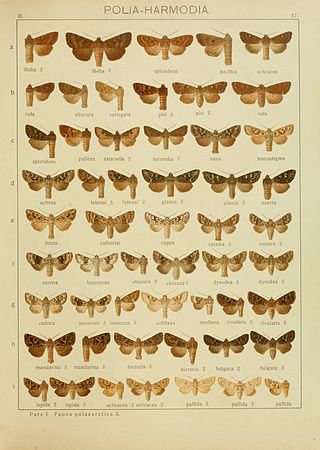
Lasionycta calberlai is a moth of the family Noctuidae. It is found in France , Switzerland, Italy and Slovenia.

Denticucullus pygmina, the small wainscot, is a moth of the family Noctuidae. It is found in most of Europe, ranging from northern Spain, through Portugal as far north as Finland. In the east it is found across the Palearctic to the Russian Far East and western Siberia. It is also found in North Africa, Turkey, the Caucasus region and northern Iran.
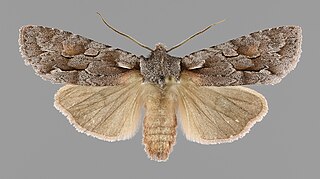
Lithophane lamda, the nonconformist, is a moth of the family Noctuidae. It is found throughout Europe, except in southern Europe. It is also absent from Iceland and Ireland.

The double-spot brocade is a species of moth of the family Noctuidae. It is found in most of Europe, in Turkey and the west of Iran. In Anatolia it is represented by the subspecies Meganephria bimaculosa pontica.

Elaphria venustula is a moth of the family Noctuidae. It is found in most of Europe, except the north. In the east, the range extends through the Palearctic to the Pacific Ocean.




















